At this Massachusetts Retailer, the Private Barrel Program Goes Beyond Selecting Single Barrels
Whisky Advocate
January 2024
Like an artist combining colors on a canvas, whiskey-centric retailers are now becoming skillfully involved in the art of blending and finishing barrels of whiskey. “It goes way beyond just picking a barrel,” says Ryan Maloney, owner of Julio’s Liquors in Westborough, Massachusetts.
Maloney and beverage consultant Randall Bird traveled to Lexington, Kentucky-based Dark Arts Whiskey House last year to meet with company president and chief alchemist Macaulay Minton, to create a new whiskey expression. Dark Arts is a blending, finishing, and re-barreling house built around the concept of alchemy. “We pay homage to alchemy and its seven stages with our label,” Minton says. “That’s where we see the magic coming in. We take great whiskeys from other distilleries, and we transform them by finishing in wine, armagnac, or maple syrup barrels and using different stage techniques to transform ordinary whiskey into liquid gold.”
The Dark Arts meeting with Maloney and Bird was a discovery process. “When these guys came in, there was no set method to what we were doing,” Minton says. “I pulled out several elements onto a barrel top and said, ‘Ryan, you come up with something; Randall, come up with something; and I’ll come up with something.’ We landed on two outstanding whiskeys.”
The trio decided on a blended bourbon created from a bourbon finished in French oak and a bourbon finished in an armagnac cask. They also blended two ryes: one finished in a white port barrel and the other in a red port barrel. “I haven’t seen any red and white port rye [finished] whiskey floating around out there, or a bourbon [finished] in armagnac [casks] blended with bourbon [finished] in French oak,” Minton says. “We’re opening the door for new possibilities in the industry.”
Portal is the name of the blended rye and the bourbon blend is Arm & Oak. Both blends retail at $100, and Maloney hopes to have them on Julio’s shelves in February. “It’s putting flavors together that are a little more intense and encompassing than just picking a single barrel,” Maloney says.
Maloney and Bird believe blending micro batches of whiskey opens up a new frontier of the single barrel craze. “Randall and I do 70 barrels a year,” Maloney says. “Some are projects, some are single barrels, some are micro-projects. We review almost four times that amount. If it doesn’t meet our criteria, we’re not going to put our logo on it.”
Dark Arts has barrels offering 14 different finishes, including various types of French and American oak, amburana oak, and barrels previously used to age white and red port, madeira, armagnac, and maple syrup. “We have lots of flavor profiles that you can layer together with the blending process,” Minton says.
Next year Minton plans to add Japanese mizunara and sakura barrels to the lineup. “I haven’t seen too much sakura wood in American whiskey,” Minton says. “I’m dialing in my custom toast profile to get exactly what I want it to be. It’s coming out with some beautiful floral notes, a little sweet honey on the back end. It’s going to be one of the next major woods we see in American whiskey. I’m doing research on Hungarian oak and African wood, so we should be pushing to the 20 mark pretty soon.”
Dark Arts produces its own range of whiskeys, including Barely Legal Small Batch Cask Strength French Oak Stave Finished bourbon, Small Batch bourbon, and Amburana Oak Stave Finished Small Batch Rye (all $90). “When you are blending whiskey, you are making an exotic sandwich,” Minton says. “It’s evaluating what people are looking for. Some people need guidance and help, but it’s an organic process. It’s a dialogue. At the end of the day just because I like something doesn’t mean that everyone else does. A group discussion is better than an individual coming in and spearheading everything.”
Bird notes some single-barrel bourbons taste a lot like the core brand from a major distillery. “How can we make something exciting and interesting?” he asks. “The ability to freewheel and try to play with flavors is not typical because most people are going to try and keep you corralled in a specific direction. It’s free-range creativity. One thing about blending and batching is if you have two really good whiskeys and put them together, it doesn’t always equal a great whiskey. It can have a subtractive effect. Two not-so-hot whiskeys put together can have a synergy that makes them even better than they were as their original components.”
Minton, who previously worked in sales and marketing of Wilderness Trail’s Private Barrel Program, is looking to further elevate the master blender’s role. “In the United States, master distillers get a lot of credit, but we don’t hear too much about master blenders in American whiskey,” he says. “I’m putting together the best batches I can with the whiskey I have in my facility. This is just the tip of the iceberg for what we’re doing.”
